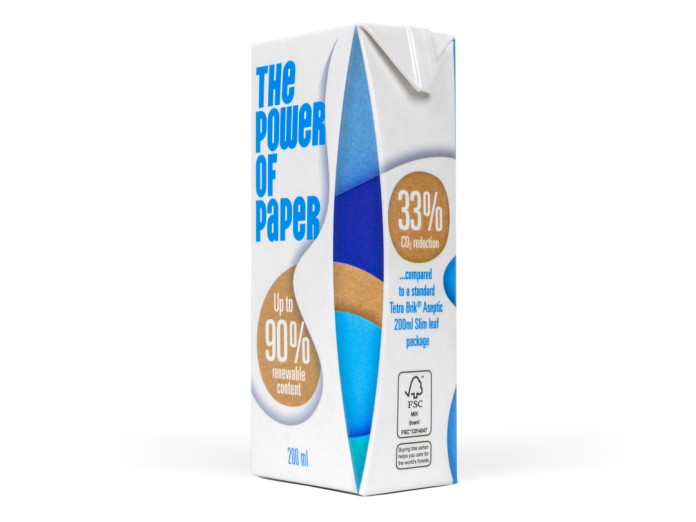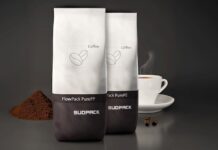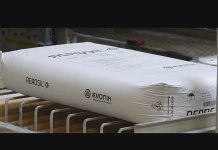After years of collaboration, Nissha Metallizing Solutions (NMS), a known name in the production of sustainable coated metalized paper for flexible packaging and labels, and Tetra Pak have announced that they have successfully developed a world first – an aseptic beverage carton featuring a paper-based barrier.
The portfolio offered by NMS includes paper-based solutions that are classified as recyclable, renewable and mono-material ones. The company says it uses paper from FSC (FSC-C109768) – certified forests and other controlled sources. These solutions, it says, can deliver the required level of protection from oxygen and light, for example through the application of different coatings.
And paper as such is a material that comes from renewable sources which, when responsibly sourced, can grow back and absorb CO2 from the atmosphere. NMS says its products decrease dependence on non-renewable resources compared to the barrier layer used in traditional aseptic cartons.
“We are extremely proud of this achievement. Our joint effort to develop this solution supports the journey of increasing paper content and reducing carbon emissions in aseptic beverage cartons. Our paper-based solution offers barrier properties that help the package to deliver comparable shelf life and food protection as traditional aseptic cartons for liquid dairy products, such as milk,” says Giorgio Bosso, CEO, NMS.
Commenting on the paper-based solution offered to Tetra Pak, Marco Marchetti, vice president of packaging materials and sales distribution systems, Tetra Pak, says, “Tetra Pak has always believed in the power of paper, and now we are taking that even further. Building on the high share of paper in our cartons today, the paper-based barrier pushes the paper content in our cartons to approximately 80% and, when combined with plant-based polymers, increases the total renewable content of a carton to 90% – cutting the carbon footprint by one-third (33%). The Tetra Brik Aseptic 200 Slim Leaf carton with a paper-based barrier, which we launched with a leading dairy producer in Portugal in November 2023, demonstrates how the paper-based barrier can pave the way towards tomorrow’s low carbon circular economy for packaging.”
Further benefits of the paper-based barrier are expected downstream, where cartons with a higher fiber yield are likely to become more attractive to paper mills. In this context, the paper-based barrier represents an opportunity for recycling infrastructures and their efficiency, since it changes the material structure of the carton package from three to just two main materials – paper and polymers, NMS explained in a press statement.
“The project carried out in cooperation with Tetra Pak perfectly mirrors Nissha’s and Nissha Group’s values and strategic pillars. With social responsibility and product innovation at its core, Nissha has always been committed to anticipating market trends and to developing solutions in cooperation with its customers to help them thrive in an increasingly competitive and sustainability-savvy market,” concludes Giorgio Bosso.
Last year Indian dairy company MilkyMist had teamed up with SIG and AnaBio Technologies to introduce the ‘world’s first’ long-life probiotic buttermilk in aseptic carton packs. The product reportedly remains stable for long periods at room temperature, reducing food waste and energy consumption during storage and transport.
Earlier this month, The Food and Beverage Carton Alliance (FBCA) launched a unified platform focused on advancing beverage cartons as renewable and circular packaging solutions. Formed from the merger of The Alliance for Beverage Cartons and the Environment (ACE) and EXTR:ACT, the alliance aims to expand beyond Europe to drive solutions that enhance food security, reduce waste, and advance low-carbon circular economies, Packaging Europe has reported.










